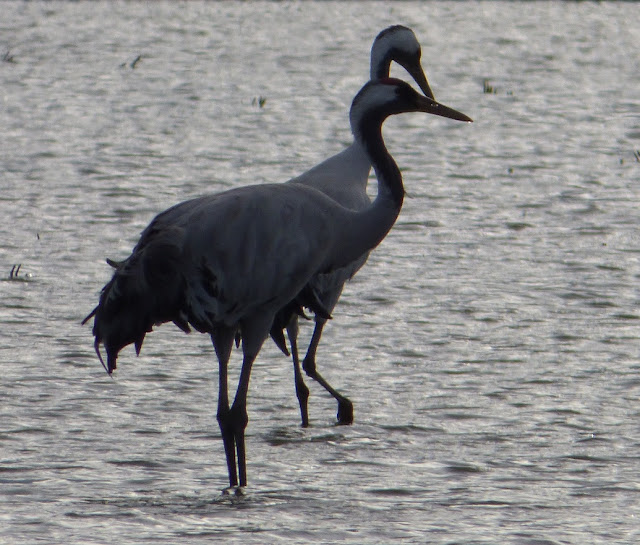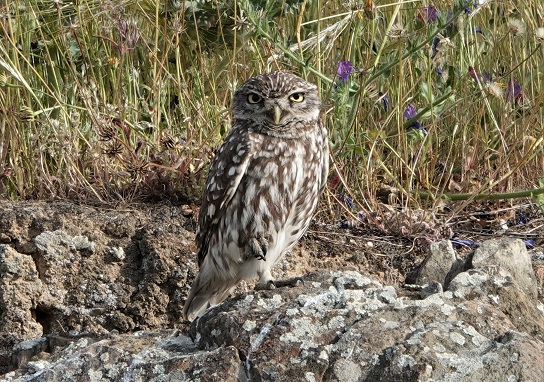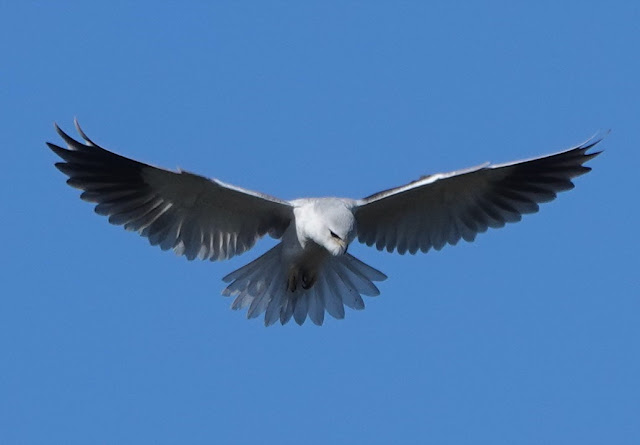This winter's tales
 |
| Common Cranes (Martin Kelsey) |
Waking at seven, the night seems as dark as it will ever be. There is no sign of an eastern glow yet and a feast of constellations is spread above me. These are days to be out and to celebrate abundance. It is mid-winter and at no other time of the year in this part of Extremadura are there so many birds. And this is no better epitomised than by the Common Cranes. Just before Christmas, volunteers across Spain and elsewhere in Western Europe took part in a coordinated count of cranes. My left elbow still aches from a repetitive strain injury caused by the use of my mechanical counter, my index finger pressed its little lever 11,739 times that day, as I registered the swathes of hunched grey-backed Common Cranes as they fed on the stubble fields or as they strode as aparitions through the fading light at a dehesa-bordered lake. My efforts contributed less than nine percent of Extremadura's count. This December a record-breaking total of over 132,000 Common Cranes was counted here. Spain holds the highest number of wintering Common Cranes in the world (nearly a quarter of a million this December) and Extremadura is by far the most important region, with Aragón coming in second with nearly 50,000 birds.
The largest numbers spend most of the winter on the stubble in Extremadura's rice and maize-growing areas, landscapes supporting a spectacular number and diversity of birds. In late afternoon, the low sunlight carries my shadow from the sandy track where I am standing, across a Typha-filled ditch and onto the cropped rows of rice stubble. A Bluethroat curtsies at the edge of a patch of open mud. The path in front of me dramatically changes colour as a thousand Spanish Sparrows erupt from its surface where a scattering of rice grains lay. They murmurate as a fluid, amoeba-like flock, as if enclosed in some membrane, holding the constituent sparrows together as a single life-form. The cause of this furore is quickly obvious, as an immaculately marked male Hen Harrier glides across my view. I am struck by the bold constrasts in its plumage: black, the palest of greys and a white enfused by the crisp afternoon sunshine. There is commotion still as flurries of jerky-flighted Meadow Pipits panic. I turn my attention to the harrier's wake and the view is pierced by its consort, a female Merlin, angular and sharp, a straight dagger of a flight in pursuit of avian prey flushed by its larger companion.
 |
| Great Bittern (Wilf Banfield) |
I had driven down this same track a few days earlier, accompanied by three birding guests. Just ahead of me I sensed a movement in the vegetation beside the track, a rounded hunched form, the identity of which I could not immediately place. Carefully I drove on a few metres to get level to the place where I guessed the creature was now hiding, a field best described as rice fallow, where open water was broken by clumps of unharvested crop in random patches and clusters of sedges. Just a few feet into this field, standing still, with its body held at a low angle, but with neck and bill frozen vertical was a Great Bittern. It recoiled its neck and took on again the hunched form that I had first seen. With slow but powerful strides it traversed the gap from one tussock to the next, where it resumed its classic bittern-pose. This it sustained for a few seconds before hunching-up again to cross the next gap in the trajectory it sought. Thus it eased itself away from us, calm and collected, until it achieved complete invisibility as perspective merged the patches of tall vegetation into one.



Comments